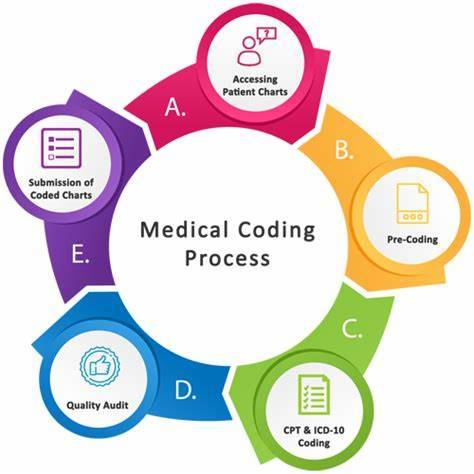#Clinical data Management Course
Text
Unveiling the Investment: Understanding Clinical Data Management Course Fees in the Medical Field
In the fast-evolving landscape of healthcare, professionals seeking to enhance their expertise often turn to specialized courses to stay abreast of the latest advancements. For those aspiring to delve into the intricate world of clinical data management, the first question that often arises is, "What are the clinical data management course fees?" This article aims to shed light on the financial aspect of pursuing a clinical data management course within the medical domain, addressing the key factors influencing the investment and the potential returns it can yield.
Clinical data management plays a pivotal role in the healthcare sector, ensuring the accuracy, integrity, and confidentiality of patient data throughout the research process. As the demand for skilled professionals in this field continues to rise, the decision to enroll in a clinical data management course becomes more compelling. When contemplating such a significant step, understanding the associated fees becomes crucial.
The fees for clinical data management courses can vary widely, influenced by several factors such as the course duration, level of expertise covered, and the reputation of the institution offering the program. Generally, shorter courses or those focusing on specific aspects of clinical data management tend to have lower fees compared to comprehensive, in-depth programs.
For instance, a reputable medical institution may offer a 3-month clinical data management course with fees ranging from $1,500 to $3,000. On the other hand, a more extensive program spanning 6 to 12 months, encompassing advanced topics and practical training, may cost anywhere from $5,000 to $10,000. It's important to note that these figures are approximate and may vary based on the geographical location of the institution and other ancillary services included in the course.
In addition to the course duration, the level of expertise covered in the curriculum also influences the fees. Basic courses covering fundamental concepts and principles may have lower fees compared to advanced courses that delve into specialized areas such as electronic data capture and regulatory compliance. Prospective students should carefully review the course syllabus to ensure it aligns with their career goals and justifies the associated fees.
Moreover, the reputation of the institution offering the clinical data management course is a significant determinant of the fees. Renowned medical schools or institutions with a track record of producing successful professionals in the field often charge higher fees. While this may seem like a substantial investment, it's essential to consider the potential returns in terms of career advancement, job opportunities, and increased earning potential.
Many institutions offer flexible payment plans or financial assistance to ease the burden on students. Scholarships, grants, or installment options may be available, making the pursuit of a clinical data management course more accessible to a broader audience. Prospective students are encouraged to explore these options and choose a course that aligns with both their career aspirations and financial capacity.
It's worth noting that the investment in a clinical data management course goes beyond monetary considerations. The knowledge and skills acquired through such programs can significantly enhance one's professional capabilities, opening doors to rewarding opportunities in the healthcare industry. Employers often value candidates with specialized training in clinical data management, considering the critical role it plays in ensuring the quality and reliability of healthcare research.
In conclusion, understanding the clinical data management course fees is a crucial aspect of the decision-making process for individuals looking to advance their careers in the medical field. The investment in such a course is not merely financial; it's an investment in knowledge, expertise, and career growth. By carefully evaluating the duration, content, and reputation of the course, prospective students can make informed decisions that align with their goals and aspirations. So, for those considering a clinical data management course, the key is not just to focus on the fees but to envision the transformative impact it can have on their professional journey within the dynamic realm of healthcare.
0 notes
Text
Why Should You Consider a Career in Medical Coding?

Introduction
Are you looking for a rewarding career in the healthcare industry that doesn't require years of medical school? If so, medical coding might be the perfect choice for you. In this blog, we'll explore the exciting world of medical coding, its importance in clinical research, and why you should seriously consider it as a career option. Let's dive in!
What is Medical Coding?
Medical coding is like the language of healthcare. It involves transforming medical information such as diagnoses, procedures, and treatments into universal codes. These codes are used for various purposes, including billing, insurance claims, and clinical research. Essentially, medical coders are responsible for ensuring that the healthcare system runs smoothly by accurately documenting patient records.
Why Choose a Career in Medical Coding?
1. In-Demand Career: The healthcare industry is constantly growing, and with it, the demand for skilled medical coders. Hospitals, clinics, insurance companies, and research institutions are always in need of qualified professionals to handle their coding needs.
2. Short Training Period: Unlike many other healthcare careers that require years of education, you can become a medical coder relatively quickly. Numerous institutes offer courses and training programs in medical coding that can be completed in a matter of months.
3. Diverse Opportunities: Medical coding isn't limited to just one type of job. You can find opportunities in various settings, including hospitals, private practices, pharmaceutical companies, and research organizations. If you want to explore related fields, you can also transition into areas like pharmacovigilance, drug regulatory affairs, or clinical data management.
4. Stability and Job Security: The healthcare industry is known for its stability, and medical coding is no exception. As long as there are healthcare services, there will be a need for medical coders. This translates to job security and peace of mind in your career.
5. Work-Life Balance: Many medical coding jobs offer excellent work-life balance. You'll typically work regular hours in a comfortable office setting, allowing you to maintain a healthy work-life balance.
6. Good Earning Potential: While salaries can vary based on location and experience, medical coders generally earn a competitive wage. With experience and additional certifications, you can increase your earning potential even further.
7. Contributing to Healthcare: By ensuring accurate coding, you help maintain the integrity of patient records, improve patient care, and support clinical research, pharmacovigilance, drug regulatory affairs, and clinical data management.
The Role of Medical Coding in Clinical Research
Now, let's delve into the connection between medical coding and clinical research. Clinical research plays a vital role in advancing healthcare treatments and therapies. It involves testing new drugs, medical devices, and treatment protocols to ensure their safety and effectiveness. Medical coding is an essential part of this process for several reasons:
1. Data Accuracy: Accurate coding ensures that the data collected during clinical trials is reliable. Researchers rely on this data to make informed decisions about the safety and efficacy of new treatments.
2. Regulatory Compliance: Regulatory agencies, such as the FDA, require precise documentation of clinical trial data. Medical coding helps maintain compliance with these regulations, which is critical for getting new drugs and treatments approved.
3. Patient Safety: Proper coding helps identify any adverse events or side effects experienced by patients during clinical trials. This information is crucial for patient safety and determining the risks and benefits of a new treatment.
4. Data Analysis: Medical coding simplifies the process of data analysis by categorizing information into standardized codes. This makes it easier for researchers to identify trends and draw conclusions from the data.
How to Start Your Career in Medical Coding?
1. Take a course: Look for reputable institutes or online courses that offer medical coding training. These courses cover topics like anatomy, medical terminology, and coding systems such as ICD-10 and CPT.
2. Get Certified: While certification isn’t always required, it can significantly boost your job prospects. Consider obtaining certifications like Certified Professional Coder (CPC) or Certified Coding Specialist (CCS) through recognized organizations.
3. Gain Experience: Entry-level positions may require some on-the-job experience. Look for internships or entry-level coding jobs to build your skills and resume.
4. Stay Updated: Medical coding guidelines and regulations can change, so it’s essential to stay current. Attend workshops, and seminars, and continue your education to remain competitive in the field.
5. Network: Join professional organizations such as the American Health Information Management Association (AHIMA) or the American Academy of Professional Coders (AAPC) to connect with other professionals in the industry.
Conclusion
In conclusion, a career in medical coding offers stability, good earning potential, and diverse opportunities within the healthcare industry. Moreover, it plays a crucial role in clinical research, contributing to the development of new and better treatments for various medical conditions. If you're interested in healthcare, have an eye for detail, and enjoy working in a structured environment, medical coding could be the perfect career choice for you. Consider enrolling in a reputable training program or course to kickstart your journey into this rewarding field. Your future as a medical coder awaits!
#medical coding institute#medical coding training#medical coding course#Clinical research training#Clinical Research Institute#Clinical research course#Pharmacovigilance course#Pharmacovigilance training institute#Pharmacovigilance jobs#Clinical data management course#Clinical data management training institute#Clinical research management
0 notes
Text

#Clinical Research Associate Training#Advanced Clinical Research Associate Certification#Clinical Research Trainng - Best Clinical Research Training Institute - Clinical Research Advance certification#Gratisol Labs is a leading Clinical Research Institute Offering Clinical Research Course#Pharmacovigilance Course#Clinical data Management Course#SAS Course#Medical Writing Course and Regulatory Affairs Course.. We offer Clinical Research Training program. This Advance Certification Clinical Res#Clinical Data Management training#SAS Training. Medical Writing training and Regulatory Affairs course. We offer clinical research Certification Program also offers Clinical#have B.Pharmacy#M.Pharmacy#Life Sciences#Microbiology#Biotechnology#Chemistry. BPT#BDS and BHMS Also eligible for Clinical Research training program. For B.Pharmacy and M.Pharmacy the pharmacovigilance course is best suita#Biotechnology and Medical Device industries to both experienced professionals and entry level candidates.#The Clincal Data Manamgent Training offered fall into the broad categories of Recruitment Solutions#Temporary Staffing#Outsourcing#Consulting#Application Training in Clinical Data Management course (Oracle Clinical#Oracle Inform/Central Designer)#Pharmacovigilance (Oracle Argus Safety Database#Oracle AERS)#CDISC SDTM & SAS to aspirants of Clinical Research Industry. We successfully help some of the top Pharmaceutical#Biotechnology and Medical Device organizations from around the world to recruit high caliber experienced & trained professionals.#The Pharmaceutical & Clinical Research Industry#worldwide is facing a huge shortage of trained manpower resources. With a View to fill this gap between the demand & supply of trained manp
0 notes
Text
https://www.ssodl.edu.in/clinical-data-management-course.php
0 notes
Text
Clinical data management courses can provide professionals with a comprehensive understanding of the regulatory requirements governing clinical trials.
0 notes
Text
The Future of Clinical Data Management

Clinical data management (CDM) is essential for clinical research, and the increasing complexity and volume of data generated by modern trials require new strategies and tools to manage it efficiently.
Artificial Intelligence (AI) and machine learning have the potential to revolutionize clinical data management by automating data entry, cleaning, and validation, and identifying patterns and trends in the data. AI can also help identify adverse events and predict patient outcomes.
Blockchain technology has the potential to increase security and transparency of clinical trial data by providing an immutable record of data transactions. It can also help with data sharing among stakeholders, while maintaining data privacy.
Cloud-based solutions offer improved scalability and flexibility in managing clinical trial data, allowing for real-time data access, sharing, and analytics across multiple sites, enabling faster decision-making and more efficient clinical trial management.
Wearable devices and sensors are becoming increasingly popular in clinical trials, generating large volumes of continuous and real-time data. This poses a challenge to traditional data management systems, so new strategies and tools are needed to manage and integrate these data streams.
Data visualization and analytics tools are becoming increasingly important due to the increasing volume and complexity of clinical trial data. They help researchers visualize and analyze data, identify patterns and trends, and make better-informed decisions.
Patient engagement has become increasingly important in clinical trials, with tools such as collecting patient-reported outcomes, facilitating informed consent, and allowing patients to access their own clinical trial data. This increases transparency and trust in the research process.
The future of clinical data management lies in the integration of new technologies such as AI, blockchain, and cloud-based solutions, as well as the development of patient engagement tools, wearable devices, and sensors. It is essential to develop innovative and efficient strategies and tools to manage and analyze these data effectively.
If you are seeking Clinical data management Training in the United States, India, Nigeria or anywhere else in the world, you must contact Great Online Training.
#Clinical Data Management#Clinical Data Management Course#CDM Course#Clinical Data Management Training#Clinical Data Management Certification
0 notes
Text
Advance Pharmacovigilance Course in Hyderabad – Pharmacovigilance Institute In Hyderabad
#pharmacovigilance#clinical data management course#clinicaltrails#medicalcoding#clinicalresearchtraining
1 note
·
View note
Text
DATA VISUALIZATION IN CLINICAL TRIALS

"Data plays a key function in organizing, monitoring, and analyzing findings for a clinical study, similar to the foundation of a new house. Data provides new insights, helps evaluate hazards, and helps choose the best course of action for a study.
Introduction
In clinical trials, adverse events are often reported by simply counting the number of people who experienced each event. Reporting only frequency leaves out other data aspects that are crucial for stakeholders, such as severity, seriousness, rate (recurrence), timing, and groups of connected Adverse events. Data visualization is the process of displaying data in such a way that it can be easily understood. It helps to identify patterns and trends and make decisions based on this information. A good data visualization tool will allow you to quickly summarize your data and make it easy for others to understand what it means.
In the last ten years, there has been an increase of 183% in data per clinical trial because of breakthroughs in science and technology. The amount and variety of such data have grown well beyond what a straightforward spreadsheet can handle. The volume and variety of data generated by clinical trials will increase as they adopt decentralized methods. The main obstacles for sponsors of all sizes are importing and evaluating data from wearables, imaging systems, apps, and central labs. The importance of curating and delivering the data to stakeholders is growing along with the difficulty and time commitment. To complete these responsibilities, a platform that enables research teams to access all data in one location is now essential.
What is Data visualization?
Data visualization is the graphical representation of information and data using visual elements like charts, graphs, maps, and other visuals. It uses a variety of techniques, such as graphs and charts, pie charts and bar graphs, line graphs (to compare two sets), maps, timelines (to show repeated observations), histograms (to find outliers), box plots, etc.,
Comparison of traditional frequency tables and data visualization
Data visualization is more effective than frequency tables because it allows you to compare data more intuitively. A traditional frequency table shows how many times each option was selected but does not allow you to see any other information about the response (e.g., mean, or median). This can be time-consuming if multiple options are being compared or if many different metrics are being displayed on one page with no space between them
Power of Data Visualization
Traditional methods just don't allow for efficient use and administration of that data when the volume of data increases and decentralized trials become more prevalent. You may easily integrate, organize, and analyze clinical data using visualization tools to boost operational effectiveness and drive clinical trial success. In addition to the obvious benefit of being able to identify outliers and trends, data visualization also helps with identifying clusters, correlations, and relationships. These are all ways that you can use your data to inform decisions about a trial.
Benefits of data visualization
More informed decisions
Faster analysis
Improved organizational efficiency
Visualizations can better support investigators to assimilate large volumes of data and enable improved informal between-arm comparisons compared to tables
Increased competitive advantage
Improved customer experience
Visualization can show data quality issues, support robust temporal searches, or even discover cohorts of patients meeting selection criteria for clinical studies that depend on huge warehouses of patient data.
The availability of more internet information and personal sensors has begun to raise patient awareness of and ownership over their health. This is a significant departure from the paternalistic approach to healthcare in which patients trust their doctors with their health during annual checkups or in the event of an injury or illness.
Provide insights into the relationships between variables and help you identify potential flaws in your study design.
Conclusion
Data visualization is a powerful way to improve the quality of Clinical trial data. The use of tables, dot plots, and volcano plots can encourage differing interpretations. This can be achieved by providing interactive tools for data exploration and analysis, as well as visual displays that are easy to interpret and understand. Care in the construction of visual displays needs to be taken as there can be potential to overemphasize treatment effects in some circumstances.
https://www.clinosol.com/
#Clinical Research Training institute#certificate course in clinical research#clinical data management course#medical writing course#pharmacovigilance course
0 notes
Text

Clini India, one of the top Clinical Research institutes in Bangalore, Hyderabad, Pune and Mumbai, Our Institute offers courses in Clinical Research, Clinical Data Management, Pharmacovigilance, Medical Writing and Clinical SAS. We are SAS Accredited and ISO Certified Clinical Research Institute. Learn From online or offline, Flexible Classes, training with placement Assistance.
#clinical research course#pharmacovigilance course#medical writing course#clinical data management course#clinical SAS course
1 note
·
View note
Photo

This Programme aims to train professionals in pharmacovigilance & clinical data management by imparting knowledge & skillsets related to drug safety
0 notes
Text
Balancing Benefit and Risk in Clinical Research
Introduction
The fields of medicine and healthcare are rapidly developing. Companies and research institutes play a vital role in advancing medical knowledge through clinical research. Clinical research surrounds various aspects, including medical coding, pharmacovigilance, drug regulatory affairs, and clinical data management. These fields are essential in ensuring the safety and effectiveness of new medical treatments. However, conducting clinical research comes with its own set of challenges, particularly when it comes to balancing the benefits and risks involved.

The Role of Clinical Research
Clinical research is the backbone of medical progress. It involves the systematic study of new drugs, medical devices, treatments, and procedures to determine their safety and efficacy. Companies and research institutes conduct clinical trials to gather data and evidence before these medical interventions are approved for widespread use.
Key Areas of Clinical Research
1. Medical Coding: Medical coding is like the language of healthcare. It involves translating medical records, diagnoses, and procedures into standardized codes. Accurate coding is crucial for proper billing and maintaining patient records.
2. Pharmacovigilance: This field focuses on monitoring the safety of drugs and vaccines post-approval. It helps identify and prevent adverse effects and ensures that patients receive safe medications.
3. Drug Regulatory Affairs: Drug regulatory affairs professionals work with regulatory agencies to ensure that new drugs meet safety and efficacy standards before they reach the market. They help companies navigate complex regulations.
4. Clinical Data Management: Managing clinical trial data is essential for maintaining the integrity of research. Data managers organize and validate information collected during trials.
Balancing Benefit and Risk
While clinical research is definitely important for medical progress, it also involves risks. Here are some ways in which companies and research institutes can strike a balance:
1. Ethical Considerations: Ethical guidelines and standards are the foundation of clinical research. Researchers must prioritize the well-being of participants and ensure that their rights and privacy are protected.
2. Informed Consent: Participants must provide informed consent before participating in a clinical trial. They should be fully aware of the potential risks and benefits, enabling them to make an informed decision.
3. Safety Monitoring: Continuous monitoring of participants' safety is essential. Any adverse events should be immediately reported and addressed.
4. Transparency: Transparency in reporting research findings is crucial. This includes disclosing both positive and negative results, helping to avoid biased information.
5. Regulatory Compliance: Companies and institutes must adhere to regulatory requirements in their respective fields, ensuring that the research meets high standards of safety and quality.
The Importance of Training
To ensure that clinical research is conducted responsibly, professionals in the field require acceptable training. Courses and training programs are available for medical coding, pharmacovigilance, drug regulatory affairs, and clinical data management. Proper training equips individuals with the knowledge and skills needed to conduct research while minimizing risks.
Job Placement in Clinical Research
For those interested in pursuing a career in clinical research, the job placement aspect is essential. Companies and institutes often offer placement opportunities for trained professionals, ensuring that they can apply their skills in real-world settings.
Conclusion
Balancing benefit and risk in clinical research is a complex but essential endeavor. Companies and research institutes play a critical role in advancing medical knowledge, but they must do so responsibly. Ethical considerations, informed consent, safety monitoring, transparency, and regulatory compliance are key factors in achieving this balance. Moreover, individuals interested in clinical research can benefit from training and job placement opportunities, enabling them to contribute to the field while ensuring the safety and well-being of patients. In this way, we can continue to make significant strides in healthcare while upholding the highest standards of ethics and safety.
#Medical billing and coding course#Pharmacovigilance jobs#Pharmacovigilance course#Pharmacovigilance training institute#Clinical data management course#Clinical data management training institute#Clinical research management#Clinical research training#Clinical Research Institute#Clinical research course#medical coding course#medical coding institute#medical coding training
0 notes
Text

#Clinical Research Associate Training#Advanced Clinical Research Associate Certification#Clinical Research Trainng - Best Clinical Research Training Institute - Clinical Research Advance certification#Gratisol Labs is a leading Clinical Research Institute Offering Clinical Research Course#Pharmacovigilance Course#Clinical data Management Course#SAS Course#Medical Writing Course and Regulatory Affairs Course.. We offer Clinical Research Training program. This Advance Certification Clinical Res#Clinical Data Management training#SAS Training. Medical Writing training and Regulatory Affairs course. We offer clinical research Certification Program also offers Clinical#have B.Pharmacy#M.Pharmacy#Life Sciences#Microbiology#Biotechnology#Chemistry. BPT#BDS and BHMS Also eligible for Clinical Research training program. For B.Pharmacy and M.Pharmacy the pharmacovigilance course is best suita#Biotechnology and Medical Device industries to both experienced professionals and entry level candidates.#The Clincal Data Manamgent Training offered fall into the broad categories of Recruitment Solutions#Temporary Staffing#Outsourcing#Consulting#Application Training in Clinical Data Management course (Oracle Clinical#Oracle Inform/Central Designer)#Pharmacovigilance (Oracle Argus Safety Database#Oracle AERS)#CDISC SDTM & SAS to aspirants of Clinical Research Industry. We successfully help some of the top Pharmaceutical#Biotechnology and Medical Device organizations from around the world to recruit high caliber experienced & trained professionals.#The Pharmaceutical & Clinical Research Industry#worldwide is facing a huge shortage of trained manpower resources. With a View to fill this gap between the demand & supply of trained manp
1 note
·
View note
Text
Best Clinical Data Management Course in Pine - Lifepoint Research
Lifepoint Research provides the Best Clinical Data Management Course in Pune. An advance PG Diploma in clinical research services.
0 notes
Text
Clinical data management courses can provide professionals with a comprehensive understanding of the regulatory requirements governing clinical trials.
0 notes
Text
Scope and Responsibilities of Clinical Data Management
Clinical data management (CDM) is a critical phase in clinical research that ensures high-quality, reliable, and statistically sound data from clinical trials. It also supports the conduct, management and analysis of studies across the spectrum of clinical research as defined by the National Institutes of Health (NIH). The ultimate goal of CDM is to assure that data support conclusions drawn from research, protecting public health and confidence in marketed therapeutics.
CDM is the entry, verification, validation, and quality control of data gathered during clinical trials, and India is the second most preferred destination due to its large patient pool, faster enrollment, and low cost. Our Great Online Training offers the best Clinical Data Management Training in Hyderabad, India, USA, and Nigeria.
Scope of Clinical Data Management
Data Management positions involve managing and processing clinical trial data.
Statistical Programming is the use of statistical programming languages to manage, analyze and report clinical trial data.
Regulatory Affairs is responsible for ensuring compliance with regulatory requirements for clinical trials.
Project management is the process of managing clinical trials to ensure they are conducted on time, on budget, and in compliance with regulatory requirements.
Clinical Research Associate is responsible for ensuring the smooth running of a study and the quality of data collected.
CDM has a high demand for skilled professionals, with many job opportunities in the pharmaceutical, biotechnology, and medical device industries. The field is constantly evolving, providing opportunities for individuals to learn and grow in their careers.
Responsibilities of Clinical Data Management
Study set-up involves defining data specifications, creating data collection tools, data validation plans, data entry guidelines, and data quality control procedures.
Data collection and processing is essential for ensuring accurate, complete, and consistent data across all study sites.
Data quality control is the process of identifying and resolving data discrepancies.
Database management ensures data is entered, tracked, and maintained according to protocol and regulatory requirements.
Data analysis and reporting is essential for decision-making and regulatory submissions.
Study close-out involves reconciliation, archiving, and preparing data for long-term storage and reference.
CDM is responsible for ensuring the accuracy, completeness, and consistency of clinical trial data to support the safety and efficacy of new drugs and medical devices. It also ensures compliance with regulatory requirements and industry best practices.
#Clinical Data Management#Clinical Data Management Course#CDM course#Clinical Data Management Training#Clinical Data Management Certification#scope of clinical data management#resposibilities of clinical data management
0 notes
Text

CSV Course in Bangalore
Discover the intricacies of Clinical Data Management through our comprehensive CSV Course in Bangalore. Gain hands-on experience with industry-leading tools and techniques, ensuring accurate and compliant data handling. Elevate your career prospects in the pharmaceutical and healthcare sectors with this essential training. Join us to master the art of maintaining data integrity and regulatory compliance for successful clinical trials.
Get more Information at: www.companysconnects.com/computerized-system-validation
0 notes